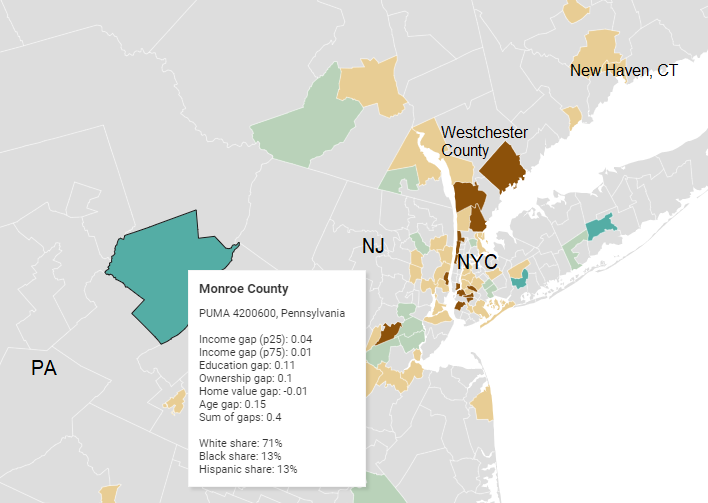Physical Address
304 North Cardinal St.
Dorchester Center, MA 02124
Physical Address
304 North Cardinal St.
Dorchester Center, MA 02124

The relationship between blacks and whites in the residential subdivisions out beyond the suburban ring suggests that middle-class people of both races recognize each other as equals. Among middleclass Americans, at least in the special circumstances of these Pennsylvania communities and others like them around the country, the terrible burden of race has been lightened greatly.
Roger Starr, Integration Without Tears, 1994
We know there are large and persistent gaps between the principal racial and ethnic groups in the U.S. Those gaps feel especially stark to people who live in gentrifying neighborhoods, which punch above their weight in national discourse.
But are there diverse places in the U.S. where racial differences among residents are small enough to be undetectable to a typical resident? Places where Roger Starr’s ideal of “integration without tears” might be a reality, where people of different races socialize as equals, share culture and priorities, and work in the same range of occupations?

I don’t have enough data to drill down to neighborhoods. But the American Community Survey allows a comparison of Public Use Microdata Area (PUMAs). Here are the national results:
I investigate white, Black, and Latino heads of households (HH) in PUMAs in which at least 20% of HH are white and at least 25% are Black or Latino. I measure inequality as the sum of log differences between whites and nonwhites across several dimensions:
These were intuitive choices to me, and the age cutoffs are intended to avoid compositional effects driven by age differences. The final dimension, age, differs much less than the others across racial groups.
At 100,000 people or more, most PUMAs are big enough to contain several towns and many neighborhoods, some of which might be quite diverse and others monochromatic. But the results can at least tell us where we might be likely to find diverse-and-equal neighborhoods. The rest of this post zooms in on a few regions.
There’s only one PUMA in the nation that qualified as fully “equal” according to my rubric, the area around Stockbridge, Georgia, in the southern Atlanta exurbs. There are some differences among the races here, but they cancel each out. Whites have higher incomes and homeownership rates than nonwhites, but lower educational attainment and home values.
Because Atlanta has a large Black population, it has many diverse PUMAs, including 3 (out of 15 nationwide) that I rated as “nearly equal”. Atlanta shows the pattern I expected to find in many metros: highly unequal centers, relatively equal exurbs.
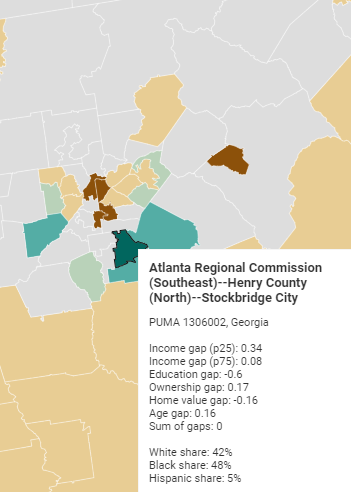
Texas cities are similar to Atlanta in some ways – diverse Sunbelt cities with rapid exurban growth. But in Texas, Latinos are the principal minority. And the central-exurban pattern breaks down. The “extremely unequal” sections of Houston and Dallas are not downtown; they’re the elite neighborhoods stretching west and north of downtown, respectively for quite a distance. Unlike in Atlanta and most other U.S. cities, though, those elite neighborhoods allow plenty of cheap multifamily housing at their edges. As a result, they have large enough nonwhite populations to get onto the map. What shows up as a concentration of extreme inequality could be reframed as extreme diversity.
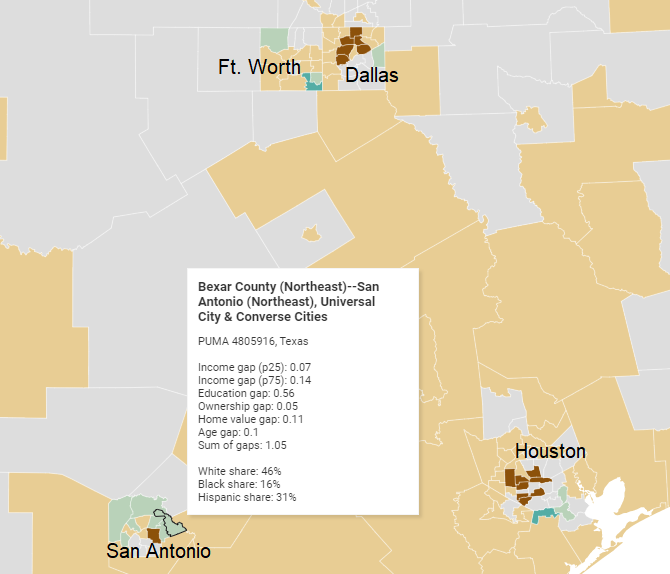
San Antonio is quite unlike Dallas and Houston. It has a wide swath of nearly-equal northern suburbs. A potential reason is that white San Antonians are less affluent. The Houston-San Antonio median income difference is $16,000 for whites but only $2,000 for Latinos.
This analytical approach also highlights how little diversity exists in northern cities, relative to national averages. Another map, showing white population share, can be a useful reference. But in cities from Boston to Seattle, this exercise is not very useful. Instead, it’s a reminder that “diversity” is contextual.
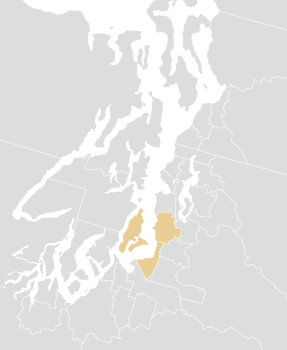
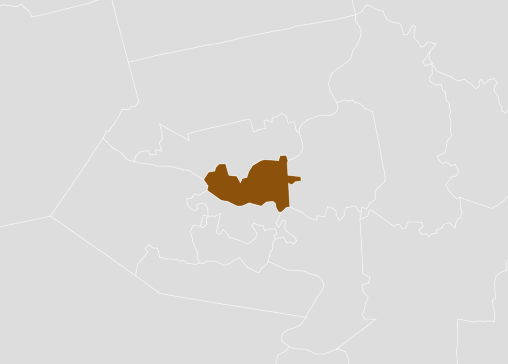
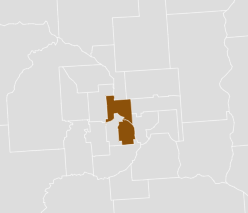
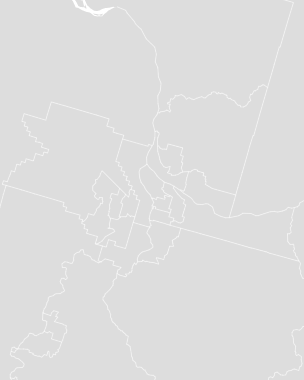
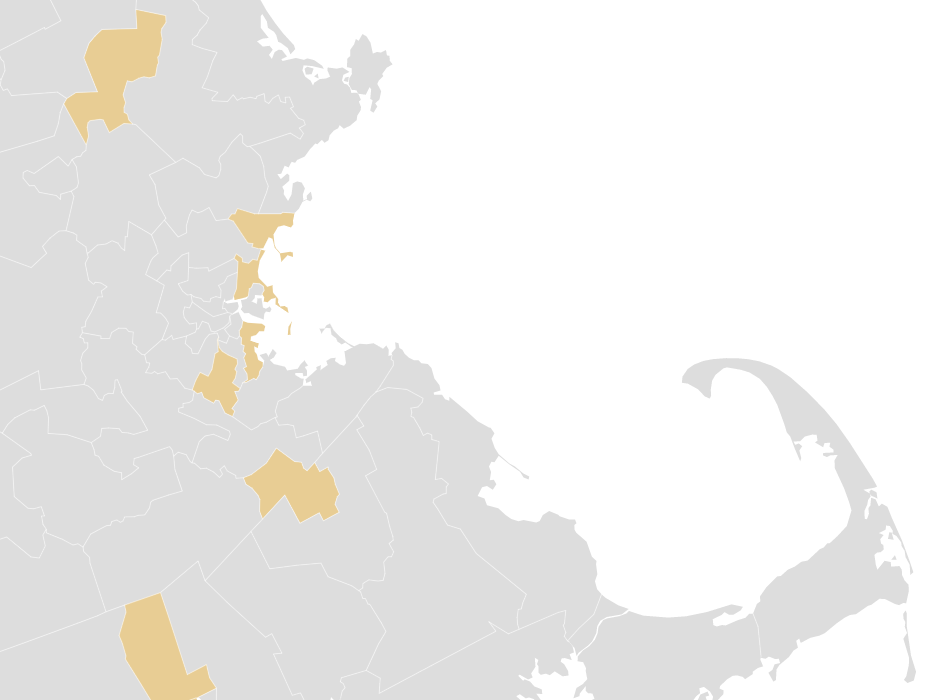
This exercise was partly inspired by my children’s rarified experience of race in America. Their playmates, at church and our homeschool co-op, are racially diverse but appear relatively equal in other regards. So I was chagrined to learn that our home PUMA is 26th highest for inequality among the 803 diverse PUMAs.

The District of Columbia is even more extreme, and it shows the age inversion common to affluent urban cores. In most PUMAs, white HH are slightly older than Black and Latino HH, but the difference is small. In central D.C., Baltimore, and similar cities, the pattern is inverted: white HH are substantially younger (median age 38) than their Black neighbors (57) in the Northeast DC PUMA.
Since diversity and equality have strongly positive connotations, it would be easy to identify the green areas on the map as “good” and the brown areas as “bad.” But the kind of equality profiled here implies a lack of diversity across non-racial dimensions.
Reducing national inequality implies lifting people up; reducing local inequality implies keeping them out. I began this article with a Roger Starr quote. It’s worth noting that his praise of woodsy Monroe County, Pennsylvania, came in the context of his increasing pessimism about integration in urban neighborhoods.
Whatever Starr’s other faults, he knew what he was looking at. In this exercise, I found that his Monroe County has the greatest similarity between races of any PUMA in the country.
